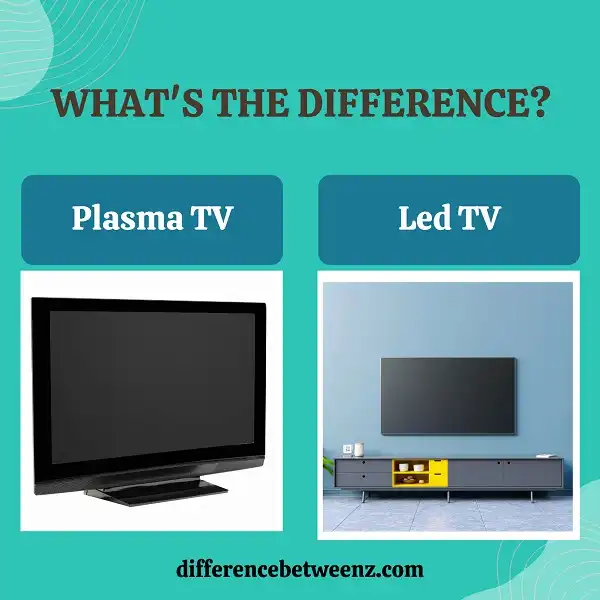TVs are a staple in most homes. It seems like every other week a new TV is released on the market with upgraded features. So, it can be tough to know which type of TV to buy- plasma or LED? Here is a breakdown of the main differences between plasma and LED TVs to help you make your decision. The two main types of TVs on the market are plasma and LED. Plasma TVs were one of the first types of flat-screen TVs to hit the market. They use electricity to create gases that emit light. This creates an image on the screen.LED TVs work differently in that they use small light-emitting diodes as pixels instead of gases. This makes them thinner and more energy-efficient than plasma TVs.
What is Plasma TV?
Plasma televisions work by using electric currents to excite tiny pockets of gas. This gas is usually a mixture of rarefied neon and xenon, and when the current is applied, the gas emits ultraviolet light. This light then strikes phosphors that are coating the inside of the TV screen, causing them to glow and create the images that we see. Plasma TVs are unique in that they can produce extremely deep black levels, which gives them an excellent contrast ratio. Plasma TVs also tend to have better color reproduction than other types of TVs. However, they do have some drawbacks. Plasma TVs tend to be much heavier than LCD or LED TVs, and they also require more power to operate.
What is Led TV?
Led TVs are a newer type of television that use light-emitting diodes (LEDs) to produce images on the screen. LEDs are small, energy-efficient light bulbs that can be clustered together to create a bright, powerful light source. In a Led TV, these LEDs are positioned around the edge of the screen and point inward. The light from the LEDs is then reflected off of a special filter and directed toward the back of the screen. This backlight creates a bright, even light that illuminates the entire screen. Because Led TVs use less energy than traditional LCD TVs, they are more energy-efficient and have a longer lifespan. They also tend to have better picture quality, with deeper blacks and brighter colors. Led TVs are available in a variety of sizes, from small 32-inch models to large 65-inch models. Prices for Led TVs range from $500 to $5000, depending on the size and features.
Difference between Plasma and Led TV
Plasma and LED TVs may look similar, but there are some key differences between the two technologies. Plasma TVs use gas to create an image, while LED TVs use a series of light-emitting diodes. Plasma TVs tend to have a wider viewing angle and better black levels than LED TVs, but they also consume more power and can suffer from image retention. LED TVs, on the other hand, are more energy-efficient and have thinner panels. They also tend to have brighter screens and higher refresh rates. Ultimately, the best TV for you will depend on your specific needs and preferences.
Conclusion
Plasma TVs have been around since the early days of televisions. They work by shooting an electric current through a gas-filled tube. This causes the phosphors on the screen to light up, and voila – you have yourself a picture. LED TVs are a newer technology, created in response to growing environmental concerns about plasma TVs. LED screens use tiny light-emitting diodes (LEDs) to create images, rather than using gas-filled tube-like plasma TVs do. Because they don’t require backlighting, LEDs are more energy-efficient and produce less heat than plasma TVs.


